Designing the largest solar-powered vacht
All-composite catamaran Tûranor continues its global circumnavigation, using only the power of the sun.
Design results:
- Carbon/epoxy sandwich construction reduces vessel weight as much as possible, minimizing propulsion requirements.
- Catamaran design with flat central deck maximizes available area for solar-cell array.
- Retractable side wings and rear flap add additional solar-power capacity yet are light enough for the crew to deploy manually.
Sometimes when you have a dream, you just have to go big. That’s what Immo Ströher, head of solar energy firm IMMOSOLAR GmbH (Langen, Germany), and Switzerland-based business partner Raphaël Domjan, a proponent of environmentally sustainable boating, did to demonstrate that solar power is not only viable, but also “commercially realistic,” the partners emphasize. The two made their concept of solar mobility real in the form of a unique oceangoing yacht, dubbed Tûranor, that is currently circumnavigating the globe. Launched in March 2010 in Kiel, Germany, it’s the world’s largest solar-powered vessel.
The unusual craft, built by composites-savvy Knierim Yachtbau GmbH (Kiel, Germany) at Kiel’s Howaldtswerke Deutsche Werft boatyard, was designed by LOMOcean Design Ltd. (Auckland, New Zealand), well-known for its innovative concepts, including the circumnavigation speed record holder Earthrace. LOMOcean director and structural composites specialist Andre Moltschaniwskyj explains that Tûranor was a logical extension of techniques developed and used on many of his company’s previous projects, including high-performance racing boats.
Tûranor started its global journey in Monaco on Sept. 27, 2010 and, at HPC press time in mid-October 2011, had put in at Singapore, on its homeward leg. Powered only by photovoltaic solar cells manufactured by SunPower Corp. (San Jose, Calif.) and assembled into panels by SOLON AG (Berlin, Germany), with lightweight lithium-ion storage batteries made by GAIA Akkumulatorenwerke GmbH (Nordhausen, Germany), the vessel understandably presented some unique design challenges.
Evolution of design
Ströher and Domjan first approached Knierim with the idea of a trimaran solar demonstrator vessel that would circle the globe. Knierim, in turn, contacted LOMOcean for a design, based on the success of Earthrace (also a trimaran). But, says Moltschaniwskyj, further discussions with the builder and the owners and consideration of numerous factors, including the required solar panel surface area, pointed to a catamaran.
“Our first concept design was very pure,” he says, “essentially, two catamaran hulls joined by two beams and supporting a very large solar panel array, similar to a high-performance sailing catamaran.” It was simple and lightweight but ultimately was deemed too spartan for the long journey. Ströher and Domjan wanted the vessel to have a useful life after the round-the-world voyage, so the vision evolved into a more luxurious yacht, with room for as many as 40 passengers during subsequent promotional trips.
A revised catamaran concept emerged, consisting of a substantial V-hulled center section with ample interior space supported by two demihulls. The vessel’s length would be 31m/100 ft with a 15m/49 ft beam, including the center hull and demihulls. An expansive, flat upper deck would support more than 500m2/5,380 ft2 of solar cells. To minimize propulsion energy requirements, it was necessary to make the vessel as light as possible. Composite sandwich construction was a given for lightweighting. It also offered the opportunity to take advantage, in the aggressive ocean saltwater environment, of composites’ low maintenance requirements and high fatigue resistance. The clients wanted to obtain formal classification of the boat with the certifying body Germanischer Lloyd (GL), explains Moltschaniwskyj, so all composite laminates and structures had to meet the agency’s approval requirements.
With the concept on paper, the designers began work on specifics. The vessel’s two demihulls are very slender for reduced drag, and in rough seas they are similar to a wave-piercing design: They tend to cut through rather than ride up over the waves, making Tûranor more stable in rough weather.
Next, estimates were made of the vessel’s weight and load distributions. Typical of most yacht designs, the structural analysis was conducted without a global finite element analysis (FEA) model. Instead, LOMOcean relied on its own in-house spreadsheets to optimize the composite laminates. According to the designer, each vessel element was analyzed as part of an integrated spreadsheet program that incorporated the algorithms associated with load prediction, laminate mechanical property predictions, panel and beam bending, shear, skin wrinkling, stiffness and buckling, as required, after inputting part geometries and load distributions. The company’s large database of mechanical test data, derived from many years of laboratory analysis, formed the basis of the property predictions, although more detailed micromechanics can be done in cases that involve unusual fiber angles or laminate stacks.
For Tûranor, however, the analysis was relatively straightforward, reports Moltschaniwskyj. “The boat is probably considered fairly radical in the marine industry, but in some ways,” he explains, “the unusual geometry of the boat made things easier from a structural-design perspective because many load paths were clearly defined.”
Designers worked hard to avoid overdesigning and, thus, adding unnecessary weight to the vessel. “We worked closely with Germanischer Lloyd to agree on the local and global loading maps for the boat,” Moltschaniwskyj continues. “This gave us a three-dimensional model of what was believed to be the highest likely water loading that would be imposed on each component.” He adds that GL generally distrusts shell laminates that are overly biased in any direction, so the structural design of the demihulls, center hull and deck shells relied on quasi-isotropic laminates, with 0°/90° woven plies in the outside skins for increased impact and abrasion tolerance: “There is a 60 percent bias in the 0°/90° orientation, with the remainder at ±45° to the principal panel direction. Emphasis was placed on meeting or just slightly exceeding the GL strain limit requirements, using as little material as possible to arrive at the final structure,” he says. The outside skin thickness in the center hull is just 2.2 mm/0.09 inch. The skin is a combination of double-bias carbon fiber fabric and some uni tapes over a 50-mm/2-inch thick high-density polyvinyl chloride (PVC) foam core.
The structural design of the curved legs that connect the center hull to the demihulls was “relatively simple,” adds Moltschaniwskyj. “We had a good understanding of the load magnitudes and paths involved there. The legs incorporate a box beam structure designed to carry bending and shear imposed by the buoyancy of the demihulls reacting the weight of the center hull.” Each leg’s box beam tapers and transitions up into a major transverse bulkhead that spans the center hull. Although the bulkhead skins are relatively thin, says Moltschaniwskyj (~1.2 mm/0.048 inch, placed over 40-mm/1.6-inch thick PVC foam core), patching or overlapping of each ply during wet layup of the joint that connects the box beam to the bulkhead effectively transitions the load over a larger area and reduces local strains in the area of the intersection.
The center hull’s 11 bulkheads, in turn, add very stiff, robust structural elements that distribute major loads to the hull (via their connections to the hull sides) and to the long stringers that run under the flat main deck. Those stringers must carry slam loads when large waves impact the underside of the center hull. The demihulls are longitudinally framed, says Moltschaniwskyj. Rectangular sandwich panels with 2.2-mm/0.085-inch thick skins form the hulls’ surface.
LOMOcean did not specify any mechanical fasteners — the wet-layed joints were configured so that no major load path depends on interlaminar shear or peel loads, both of which can introduce a high degree of uncertainty when calculating achievable mechanical properties.
LOMOcean finalized the concept and built several models, which underwent tank towing and wind-tunnel testing prior to build to ensure that the above-water and underwater geometries would perform as planned.
Extra power with wings
One of the more challenging elements on the project, reports Moltschaniwskyj, was the design of two retractable side wings and a flap at the stern, which were fitted with extra solar panels that can be manually deployed for maximum power production. The wings and flap had to be light enough to permit manual extension and retraction, yet stiff enough to avoid flapping movements due to wind loads or the roll motion of the boat.
“The principal loads on the wings were water loadings, should a wave wash over them,” explains Moltschaniwskyj. “However, imposing similar design forces as the main-deck water loading made the cantilever solution much too heavy. So we designed these components lighter, with the thought that if they were exposed to significant wave impact, their damage or loss wasn’t a threat to the overall safety of the boat.”
The wings are still strong enough to carry not-insignificant water loads of up to 4.2 kPa/0.6 psi. When deployed, they add another 100m2/1,076 ft2 of photovoltaic surface area, bringing the total theoretical peak power generation capacity to 93.5 kW, about one-fifth of which is used at cruise speed (about 5 knots/5.75 mph) by the two electric motors and drive systems, mounted at the rear of the demihulls. Each drive is outfitted with a carbon fiber propeller from AIR Fertigung-Technologie GmbH & Co. KG (Rostock, Germany), a Voith Group company.
Materials were selected during consultations between LOMOcean and Knierim Yachtbau, keeping budget restraints and preferred suppliers in mind. The builder opted for PVC foam core, manufactured by Airex AG (a division of 3A Composites Core Material, Sins, Switzerland), rather than aramid honeycomb, for greater ease of manufacturing. Wetpreg techniques with an onsite impregnator device were used rather than prepreg.
To date, the vessel has performed flawlessly from a structural standpoint, reports the designer, who says the sandwich design minimizes weight without compromising damage tolerance. Concludes Moltschaniwskyj, “By using a regimented, structured approach to each element of the boat design, you engineer in reliability and fitness for purpose.” After nearly a year at sea, its composite design has proved seaworthy and sunworthy showing that solar power has a bright future for marine propulsion.
Related Content
Plant tour: Teijin Carbon America Inc., Greenwood, S.C., U.S.
In 2018, Teijin broke ground on a facility that is reportedly the largest capacity carbon fiber line currently in existence. The line has been fully functional for nearly two years and has plenty of room for expansion.
Read MoreTU Munich develops cuboidal conformable tanks using carbon fiber composites for increased hydrogen storage
Flat tank enabling standard platform for BEV and FCEV uses thermoplastic and thermoset composites, overwrapped skeleton design in pursuit of 25% more H2 storage.
Read MorePlant tour: Albany Engineered Composites, Rochester, N.H., U.S.
Efficient, high-quality, well-controlled composites manufacturing at volume is the mantra for this 3D weaving specialist.
Read MoreThe lessons behind OceanGate
Carbon fiber composites faced much criticism in the wake of the OceanGate submersible accident. CW’s publisher Jeff Sloan explains that it’s not that simple.
Read MoreRead Next
Developing bonded composite repair for ships, offshore units
Bureau Veritas and industry partners issue guidelines and pave the way for certification via StrengthBond Offshore project.
Read More“Structured air” TPS safeguards composite structures
Powered by an 85% air/15% pure polyimide aerogel, Blueshift’s novel material system protects structures during transient thermal events from -200°C to beyond 2400°C for rockets, battery boxes and more.
Read MoreVIDEO: High-volume processing for fiberglass components
Cannon Ergos, a company specializing in high-ton presses and equipment for composites fabrication and plastics processing, displayed automotive and industrial components at CAMX 2024.
Read More

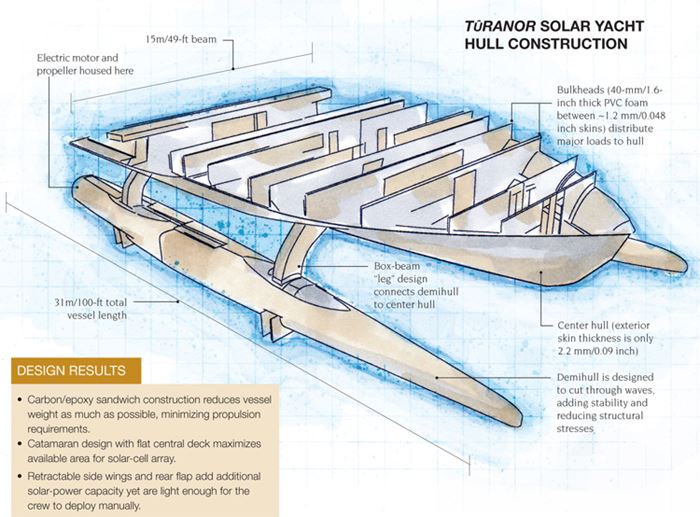
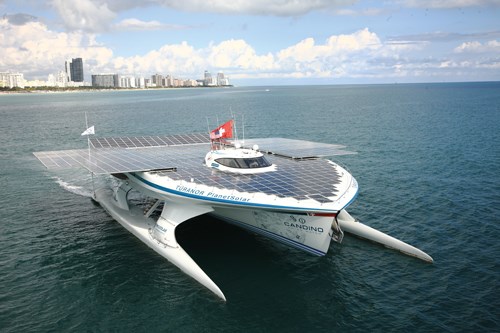
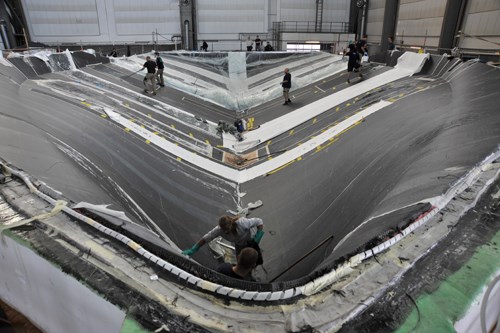
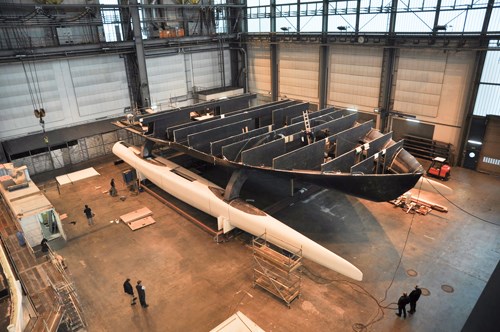
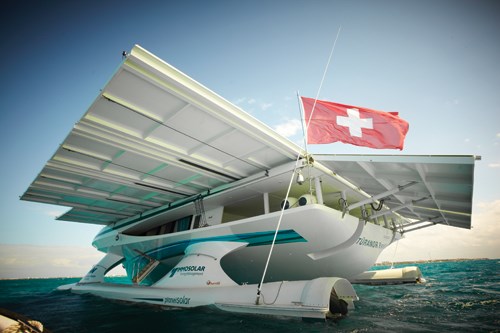














.jpg;maxWidth=300;quality=90)







